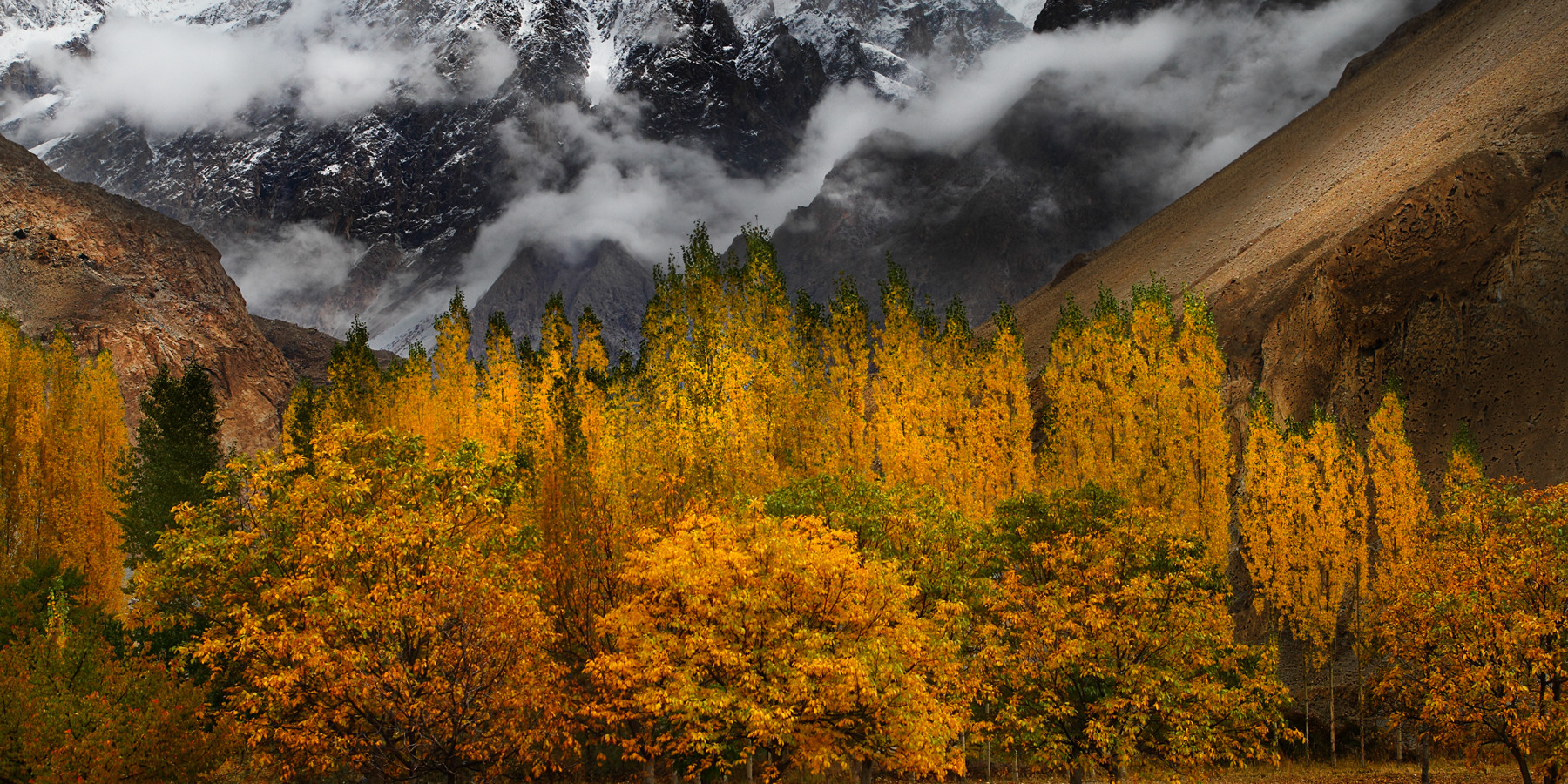
The valley has different beautiful natural sights and attractions for tourists. Among these attractions, the Baltit and Altit fort are well known. The Baltit Fort, after renovation, has recently been turned into a heritage museum. In Hunza, the bazaar of Karimbad is famous for its local handicrafts, handmade rugs, traditional embroidered caps, shawls, handwoven cloth (paffu), and its favourite gemstones all over the world, particularly Ruby. The Ruby mines are renowned tourist attractions.
Famous Forts
Besides its scenic beauty, tourists visit this valley to glimpse the two most famous forts of Hunza, known as Altit and Baltit fort.
The Altit Fort is the oldest in northern areas located in the Altit village. It is built with great architectural design on a mountain rock where the Hunza River flows at its back.
Baltit Fort is another beautiful fort in the Hunza valley, built at the top of Karimabad. It has won numerous awards, including the Tourism of Tomorrow Award, Asia-Pacific Heritage for Cultural Conservation- Award of Excellence (UNESCO). The Time Magazine of Asia awarded it the Best of Asia Award in 2005.
People and Language
Most of the people of Hunza are Ismaili Shia Muslims who are the followers of Prince Karim Aga Khan IV, while in the area of Ganish Village, over 90% are Shia Muslims.
The Hunza region is principally home to people of three ethnicities:
The Lower Hunza area, which extends from Khizerabad to Nasirabad, mainly belongs to the Shinaki people, whose local language is Shina.
The Central Hunza area, which extends from Murtazaabad to Attabad, mainly belongs to the Burushaski speakers.
The Upper Hunza area, commonly known as Gojal, extends from Shiskat to Khunjerab and belongs to Wakhi speakers.
Just like the valley is known for its scenic beauty, the people of Hunza are warm-hearted and known for their hospitality. Although Burushaski is the most widely accepted language among all, but a majority of the people also understand Urdu and English.
Many cultural activities are associated with this valley, and the people of Hunza are fond of celebrating such events. Among all age groups, traditional dance is very common, and there is a special conventional band for this dance which makes it more fun and exciting.
Education
According to a survey held, the literacy rate of the Hunza valley is believed to be above 90%. The valley proves to be a 'role model' for Pakistan regarding high literacy rate and school enrolment where every child to a minimum studies up to high school. Of these, many go to prestigious colleges and universities of Pakistan and abroad to get higher education.
Lifestyle
The people of Hunza are very healthy and have the longest lifespan globally. They remain strong and robust even in old age. This is because of the pure water they drink and their natural diet. The people walk a lot on the rugged terrain every day, which serves as physical exercise for them. Among other organically grown food, the most common fruit in Hunza is apricot, which is their Gold. The people there eat fresh apricots in the season, dry them, and puree the dried apricots of which jam and ice cream are later made. These people also get the nutritional richness of other fruits grown there, including apples, pears, black and red cherries, and peaches. The number of orchards and trees under cultivation are used to gauge the economic stability of the local people in Hunza.
Hunza chapatti bread is a major component of their diet made from nutritious grains, and the Glacial Milk also helps keep these people healthy.
Traditional Festivals
The Hunza Valley is home to various festivals related to religion, culture and normal life events. These festivals fall into two main categories: religious festivals and cultural festivals (daily life or agricultural). The religious festivals include:
Eid-Ul-Azha
Eid-Ul-Fitr
Eid-Ul-Meladul Nabi
Nowroz festival
Shab-e Barat,
Shab-e-Miraj,
Eid Ghadeer,
Salgira-e- Imam Zman Mubar (Birthday of Agha khan)
The local community celebrates the traditional Ginani festival with many gatherings organized in Altit, Baltit and Aliabad. This festival is celebrated to welcome the new harvesting season with joy and happiness. The celebrations are made with dance, music, and a traditional dish is made to mark the festival known as Dirum Pitti.
Another famous festival is the Spring Blossom Festival which gives the people an opportunity to sit together and enjoy life. Exhibitions, sports programs, and cultural shows attract the audience to this festival to celebrate the region's cultural heritage.
Apart from these other festivals include Baba Ghundi and Shimshal Kuch festival.
Dresses
The weather from April to September is quite pleasant in Hunza, requiring people to wear light woollen clothes. However, during winters, heavy woollen clothes are required.
The women wear colourful, knee-length shirts with shalwars and cover their heads with traditional embroidered caps. For men, the common dress is Shalwar Qamiz and caps are made out of handwoven woollen material called 'Pattu'. In winters, they wear loose embroidered gowns as overcoats.
Cuisine
The local speciality dish of Hunza is 'fittis', which is very delicious and worth tasting. These are cakes made of wheat flour, milk, butter and salt, baked on a hot stone. Apricots, apples, plums, peaches, cherries and grapes are various fresh fruits grown in this region. As stated before, the Hunza bread is again a nutritious diet of grains. When talking about foreign visitors, Grape extract known as 'Hunza Water' is very popular among them.
Conclusion
Pakistan has been blessed with beautiful locations throughout the country, and Hunza sure is one of them. It remains very famous, for its scenic beauty and unique culture, with the locals as well as the foreigners. Being the people of Pakistan, we should protect our land and become the ambassadors of such beautiful places.

